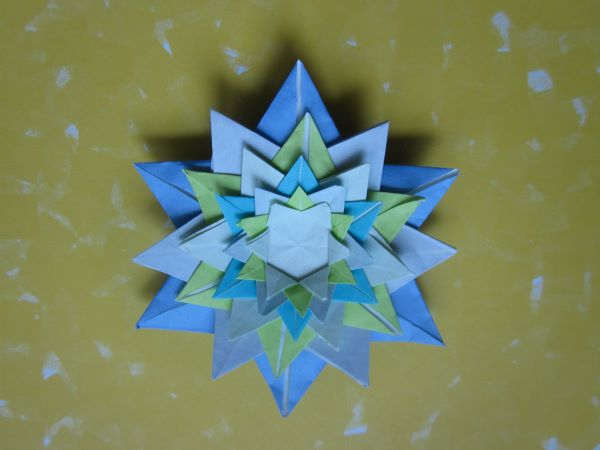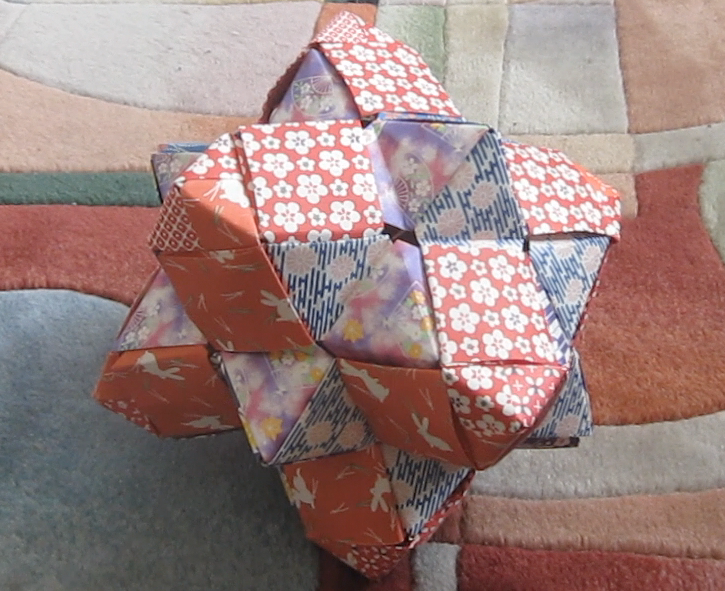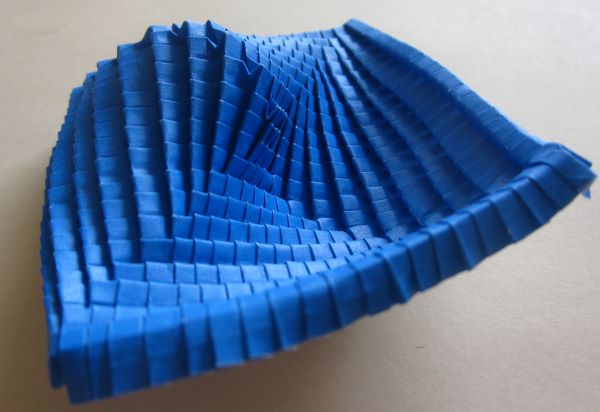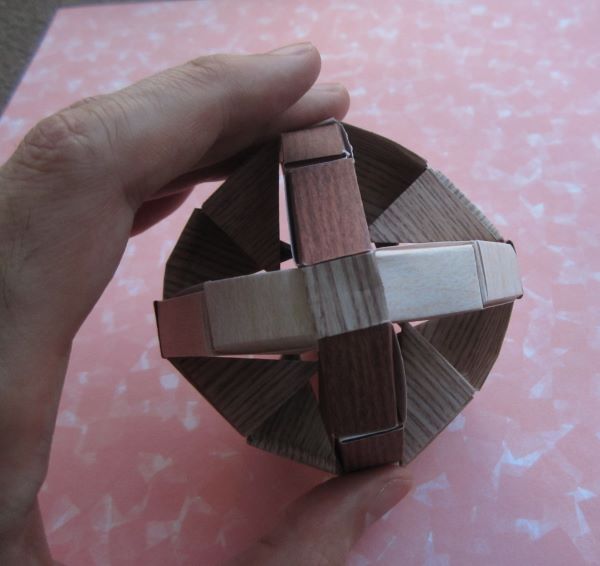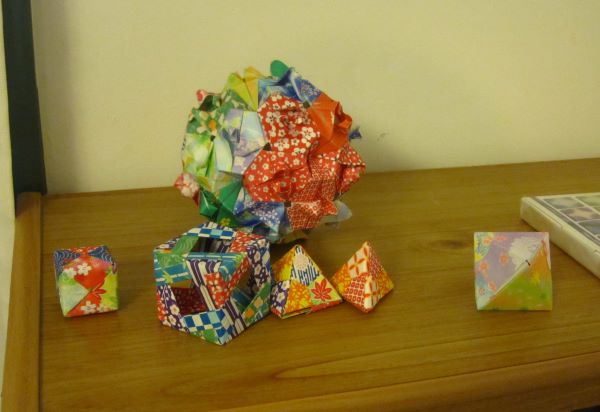
From top to bottom, left to right:
1. Dimpled Model with Curls by Meenakshi Mukerji.
2. Sonobe Cube, by Mitsunobu Sonobe.
3. Cube with Windows, by Bennett Arnstein, simplified from Lewis Simon’s Decoration Box.
4. Equilateral Triangle Edge Module, by Lewis Simon and Bennett Arnstein, modified by me to make a square pyramid.
5. Same as #4, making a tetrahedron.
6. Simple Chain-of-4-Equilateral-Triangles From a Square, by Lewis Simon.
I mentioned that I messed up my photo organization, so I was trying to figure out what I hadn’t posted already. I think I’ve posted a few of these, but let’s just knock them all out from my list. These are the very first models I folded when I started doing modular origami in 2012.
Most of these are from Beginner’s Book of Modular Origami Polyhedra: The Platonic Solids by Rona Gurkewitz and Bennett Arnstein, and I do recommend that for beginners. The Dimpled Model with Curls is from Meenakshi Mukerji’s Exquisite Modular Origami.

